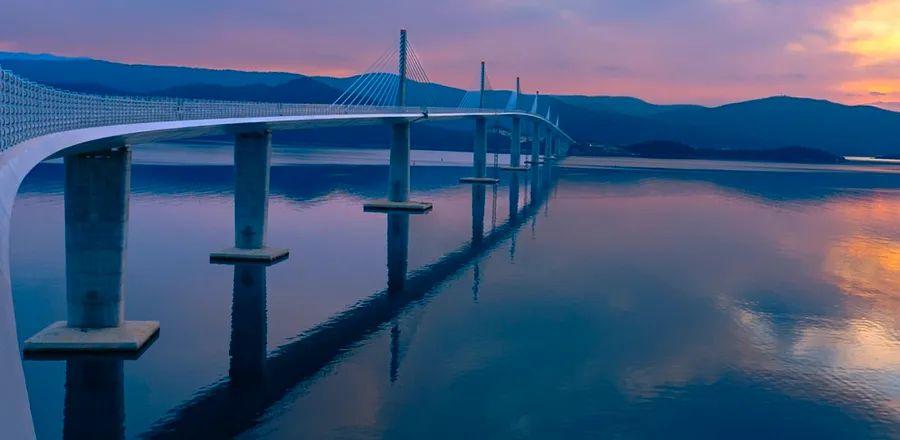Road Trips in Croatia Have Become Much More Convenient Thanks to This New Bridge

On Tuesday, Croatia unveiled a long-anticipated bridge that connects two sections of the Adriatic coastline while circumventing a small part of Bosnia's territory.
High-ranking officials and guests gathered for a formal inauguration ceremony that featured a military jet flyover, speeches, performances, and a spectacular fireworks display.
Earlier that day, many Croats braved the summer heat to be among the first to walk across the Pelješac bridge, which opened for pedestrians prior to the official ceremony.
Partially funded by the European Union and constructed by a Chinese firm, this stunning cable-stayed bridge features six pylons and represents a unique endeavor amid European concerns regarding China's growing economic influence through infrastructure investments.
In a video address during the opening ceremony, Chinese Premier Li Keqiang remarked that the bridge symbolizes the friendly ties between China and Croatia, as well as between China and the EU.
Li stated, "China and the EU are significant political forces and leading global economic powers."
The 2.4-kilometer (1.5-mile) bridge crosses the Adriatic Sea, connecting Croatia’s mainland to the Peljesac peninsula in the south, facilitating easier access to Dubrovnik, the country's key tourist destination with its medieval walls.
Croatian Prime Minister Andrej Plenkovic hailed the occasion as historic for a nation that became an EU member in 2013, following its separation from Yugoslavia and enduring a war in the 1990s.
Plenkovic expressed, "I am filled with immense pride, joy, and gratitude."
The Yugoslav federation had no internal borders separating its six republics, including Croatia and Bosnia. However, following its dissolution in the early 1990s, Croatia’s Adriatic coastline was divided by a narrow strip of Bosnia.
Both locals and tourists were required to undergo border checks, which created traffic delays and left residents in the southern region feeling disconnected from the rest of the country.
This region encompasses Dubrovnik, a breathtaking medieval city recognized as a UNESCO World Heritage site and Croatia’s top tourist destination.
The bridge became a reality in 2017 when the EU provided 357 million euros (US$365 million), which funded a significant portion of the total 526 million-euro (US$533 million) project cost. In 2018, the China Road and Bridge Corporation secured the contract to build it through an international tender.
However, the project faced criticism from Bosnia, where officials raised concerns about unresolved border disputes, claiming the bridge would obstruct access to its coastal areas.
Renowned for its breathtaking landscapes and countless islands along the Adriatic Sea, Croatia is a prominent tourist hotspot, drawing millions of visitors from Europe and beyond each summer. Tourism plays a crucial role in Croatia’s economy, which remains one of the most vulnerable within the EU.
Evaluation :
5/5



